A few days ago, I determined that shutter speeds over 1/1000 second using electronic first curtain shutter (EFCS) on the Sony a7RII with a Zeiss 100mm f/2 Makro-Planar ZF lens showed some exposure unevenness, and shots over 1/2000 second showed a lot.
Sony warns in the a7RII manual that exposures using EFCS made with non-native lenses will (not may) be uneven. I’ve found no material problems at 1/1000 and below with the Zeiss 100/2, though.
I set up a comparison between that lens and the Sony 90mm f/2.8 FE macro lens. I set up an oscilloscope with a high-frequency triangle wave as input, set the time base to 500 microseconds per division, and made a series of photographs.
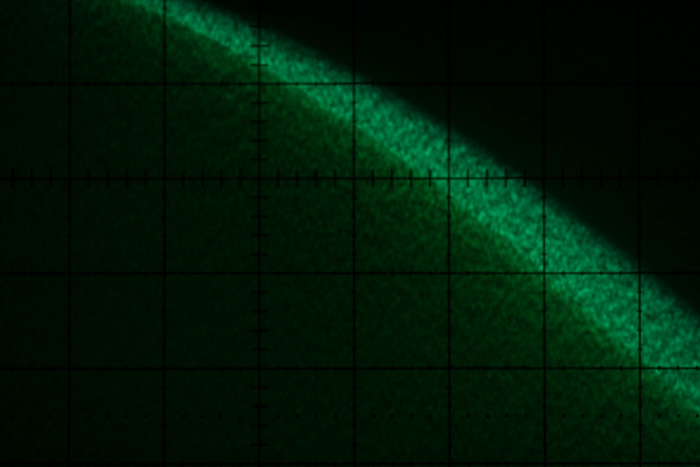
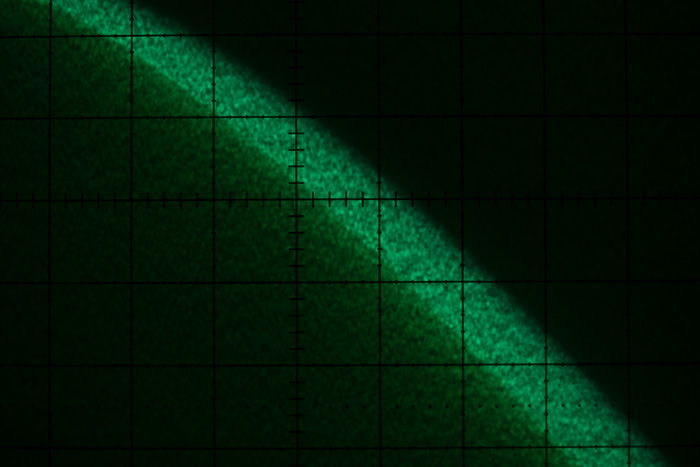
The Sony exposure is much more even.
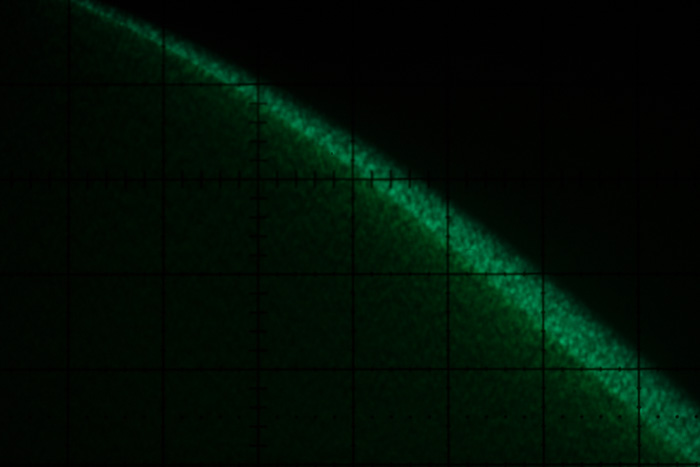
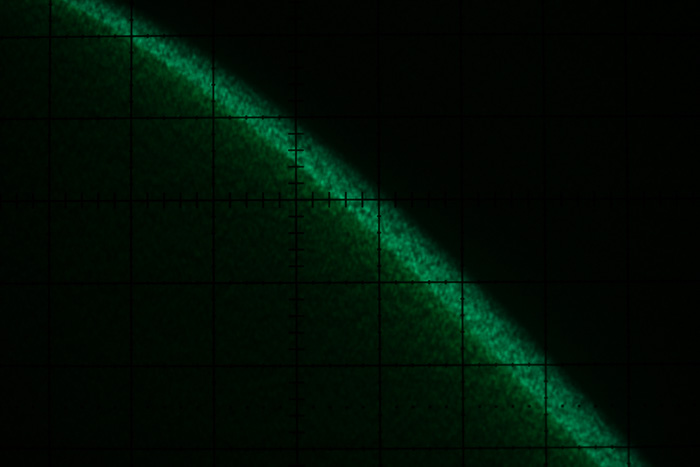
The Sony exposure is much more even.
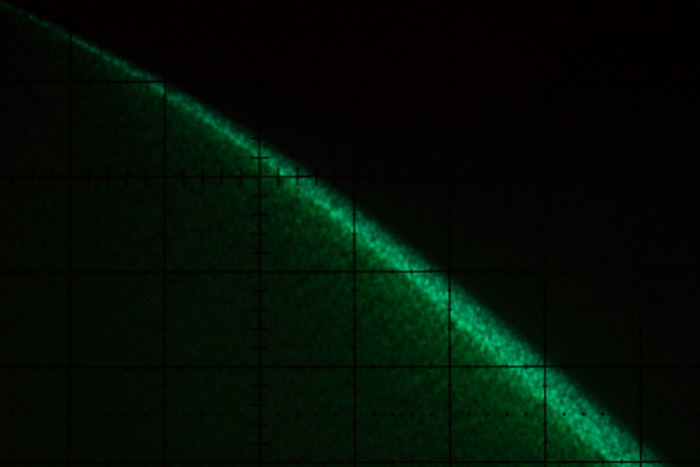
Hardly anything at the top of the frame.
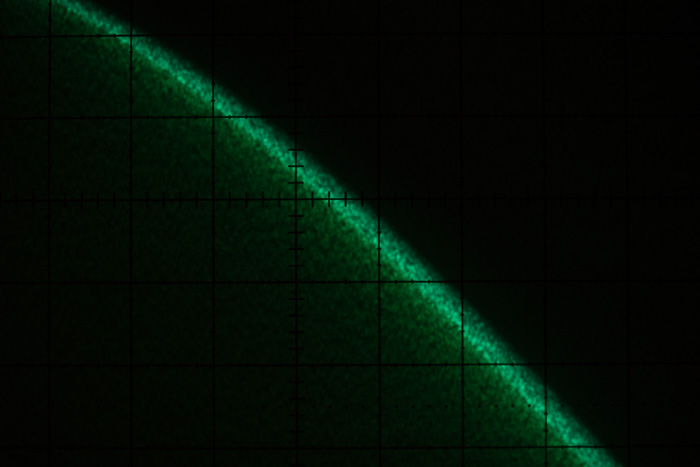
Not perfect, but not bad at all.
What is Sony doing to even out the exposure for native lenses, and why can’t they do it for third-party ones?
CarVac says
Perhaps it has to do with the location of the exit pupil affecting the offset of the shadow from the shutter curtain.
Jim says
Yes, and that is f-stop and subject distance dependent as well. Is Sony taking all that into account? At least with the 90/2.8 FE, the errors are all in the same direction: exposures to short at the optical top of he image (physical bottom).
CarVac says
The f-stop probably only affects how sharp the exposure cutoff is from the rear curtain. (the top right side in your images).
The closer the exit pupil is to the sensor, the faster the shadow of the rear curtain moves. The farther away the exit pupil is, the slower it moves. It should always be correct at the center.
With the 100/2, the exit pupil is (probably) pretty far forward (the datasheet doesn’t seem to give that anymore), so the second curtain’s shadow begins sooner and moves slower than expected, making the top of the image dark and the bottom light.
I suspect that for third party lenses it assumes a fairly close exit pupil for use with small adapted rangefinder lenses: thus the electronic front curtain starts a bit later and travels a bit faster to keep up with the curtain’s shadow.
With first party lenses, they probably know pretty much where the exit pupil is based on zoom and focus and can adjust the timing and speed of the electronic front curtain appropriately.
Now that I pay attention, it says in my 60D manual:
“If you use a TS-E lens to make vertical shift movements or use an Extension Tube, be sure to set this to [Disable]. Setting it to [Mode 1] or [Mode 2] will result in incorrect or irregular exposures. When you press the shutter button completely, the shutter will sound like it took two shots. However, only one shot will be taken.”
Clearly, it knows and can compensate for the exit pupil position for first-party lenses, EXCEPT when you have an extension tube (which just extends the wires, it doesn’t tell the camera) or have shifted a tilt-shift lens.
I imagine this could be a minor problem for 3rd party lenses, since they often spoof their identities.
Jim says
Take a look at this:
http://www.dpreview.com/forums/post/56303687
http://www.dpreview.com/forums/post/56307652
Jim
CarVac says
Huh, I didn’t consider that.
Even if the timings and speeds are correct it’ll still cause a gradient in the background blur.
Jim says
That’s an interesting idea. I could repeat the test with the Nikon 60mm macro, and if you’re right, it will be better.
Jim
CarVac says
As long as it’s significantly less telecentric, it should show some difference.
You could also do a more crude check by just comparing the exposure evenness differences between the mechanical shutter and EFCS using the Leica symmetrical wideangles at 1/8000. If I’m correct, the bottom half of the image should be darker in that case.
Pixelerate says
http://www.dpreview.com/forums/post/56340864
Please can you give your opinion regarding this feature? Would you be able to request it on the sony site? You have more of a following than me. I think the EFCS feature, where EFCS is disabled at higher shutter speeds, is essential to outdoor photography.
I have found huge problems when light changes quickly
Jim says
I’m sorry, but I have no contacts at Sony, and no reason to think that anyone in a position of authority there knows I exist.
I am worried that, if Sony puts an automatic defeat of EFCS at some shutter speeds, they will defeat its usage for non-naitve lenses, and that would be throwing the baby out with the bathwater.
Jim
Featured says
https://community.sony.com/t5/Alpha-NEX-Cameras/Feature-Request-a7rII-EFCS-Problem-Easy-Fix-amp-Spot-Metering/td-p/519978
On a sunny day, with any lens, you get huge banding from EFCS.
I’ve submitted a feature request there
n/a says
Jim, did you investigate electronic rolling shutter & efcs at very short exposure times in forced APS-C mode (when A7RII makes 18mp raws instead of 42mp raws) ? thx
Jim says
I did look at Silent Shutter in APS-C mode:
http://blog.kasson.com/?p=11273
but not EFCS. You can get a sense of EFCS by just mentally omitting the top part of the full frame images.
Jim
Joel says
An oscilloscope is like a tv monitor with display that scans on a line by line basis. It’s common knowledge that this interfers with photography. Furthermore, each lens refracts light in a different way.
If one wants an accurate, pertinent comparison, one might want to take pictures of a test chart.
JimK says
You have a fundamental misunderstanding of the way that analog oscilloscopes work. They don’t scan line by line. As far as the scope is concerned, there are no lines.